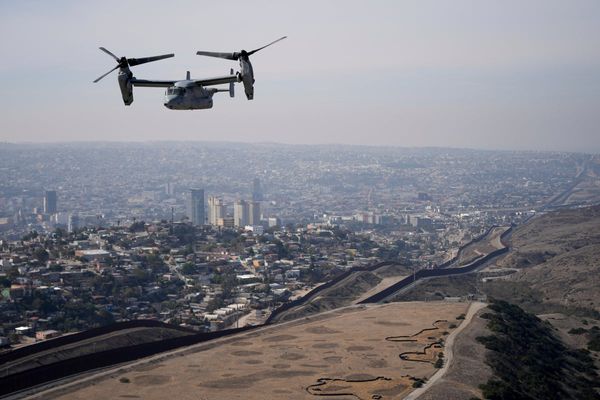
The cost-of-living crisis and inadequate welfare payments are fuelling a rise in food insecurity in Australian households, according to a new report.
The charity Foodbank’s annual Hunger Report, to be released on Monday for Anti Poverty Week, surveyed more than 4,000 Australian adults, finding the problem extended beyond those on fixed incomes and was affecting many people in work.
The report estimated about 500,000 households on any given day experience food insecurity, which describes being uncertain about getting enough food and compromising on nutrition through to disrupted eating patterns and reduced food intake.
The chief executive of Foodbank, Brianna Casey, said the situation was as bad as she had seen it in her six years in the job. She called for an increase to income support payments and additional support for the community sector.
“I’ve never seen anything like what we are seeing right now,” she said. “It’s going to come as a surprise to many that we are seeing rates of food insecurity that are worse than at the height of the pandemic … People have come out of the pandemic in many instances in a more vulnerable position than they went in.”
Foodbank’s findings are based on an extrapolation of the responses from a nationally representative survey conducted in July and are more severe than past research into food insecurity in Australia.
The report said 21% of Australians – or more than 2 million people – had experienced severe food insecurity in the past 12 months. That was up from 17% on its 2021 report.
Past estimates have put the rate of food insecurity in Australia between 4% and 14%, while a UN report said 16% of Australian children under 15 lived with an adult who was food insecure in 2017. Meanwhile, a Guardian Australia analysis last year found significant growth in food relief across Australia over the past decade.
The new Foodbank report said that among those experiencing food insecurity, 64% cited increased or high living expenses and 42% pointed to “reduced or low income or government benefits” as a key cause.
Among those experiencing severe food insecurity, 67% said their circumstances were worse this year than last.
Households with children reported food insecurity at 1.5 times the national average, while about a third of people in work had experienced it in some form in the past year.
The report said the diverse range of people facing food insecurity was likely to increase “due to the range of external factors affecting households which may never have experienced food insecurity before”, such as the increasing cost of living, the frequency and severity of natural disasters and the pandemic.
Only two in five households who reported being food insecure had sought food relief, a statistic attributed to ongoing stigma and practical factors such as a lack of access or eligibility.
One person who has sought assistance is Jane*, 27, a single mother to a three-year-old daughter living in a private rental in New South Wales.
Jane receives the single parenting payment while also working casually and studying to become a teacher. Jane said she was forced to seek help from local charities during weeks-long periods of unpaid practice for her university degree.
Without that help Jane said she would have been “living off toast and two-minute noodles”.
“One trip to Woolies for a couple of bags of groceries is now $100 to $150 … My income does not stretch that far,” she said. “The cost of living is rising so much that I’m going to have to rely on those organisations more.”
Jane said her welfare payments had been recently increased in line with inflation but it was not enough. She recently entered a payment plan for an $800 three-month electricity bill.
“The [welfare] increases happen, you feel relief for a few weeks but then something else happens,” Jane said. “My GP recently sent out a message saying they will no longer be bulk billing. It’s things like that.”
The Foodbank report comes as welfare groups call on the government to ditch the stage-three tax cuts after an Australian Council of Social Service report last week found about one in eight Australians lived in poverty.
A report by Financial Counselling Victoria (FCV) to be released on Monday also backed calls for a boost to welfare payments. Interviews with 90 financial counselling clients found 69% had struggled to pay for food and 73% had skipped meals.
The FCV executive officer, Dr Sandy Ross, said the situation was also fuelling the mental health “epidemic”.
The federal government has ruled out an increase to income support payments in the upcoming October budget but said it would consider it in future.
*Name has been changed for privacy







